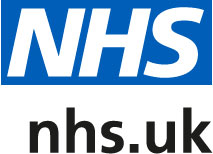Eastham Group Practice
47 Bridle Road, Bromborough, CH62 6EE | Telephone: 0151 327 1391 | cmicb-wi.gatekeeper-n85005@nhs.net
Sorry, we're closed

At risk of developing diabetes – Non diabetic hyperglycaemia
We are offering a routine blood test to those patients who have been identified as at risk of developing diabetes, as per NHS guidance.
Symptoms of hyperglycaemia in people with diabetes tend to develop slowly over a few days or weeks.
Symptoms of hyperglycaemia can also be caused by undiagnosed diabetes, in some cases, there may be no symptoms until the blood sugar level is very high, the symptoms to look out for include:
- Increased thirst and a dry mouth
- Needing to pee frequently
- Tiredness
- Blurred vision
- Unintentional weight loss
- Recurrent infections, such as thrush, bladder infections (cystitis) and skin infections
- Tummy pain
- Feeling or being sick
- Breath that smells fruity
REASON
Your blood tests indicated that your blood glucose level is raised and either your fasting blood glucose or Hba1c levels are a little higher than they should be.
This is a non-diabetic hyperglycaemia level. The box below shows you where your readings lie compared with normal glucose readings and diabetic glucose readings.
| Test | Normal | Non- diabetic hyperglycaemia | Diabetes |
| Fasting Glucose | < 5.5 | 5.5 – 6.9 | >=7..0 |
| HBA1C | <40 | 42 – 47 | >=48 |
WHAT DOES IT MEAN?
You have non-diabetic hyperglycaemia (sometimes also called pre-diabetes, impaired glucose tolerance or impaired fasting glycaemia) which means your blood glucose is raised beyond the normal range but it is not so high that you have diabetes. However, you are at risk of developing type 2 diabetes. You are also at risk of developing cardiovascular disease (heart disease, peripheral vascular disease and stroke).
What is type 2 diabetes?
This is a condition where the amount of sugar (or glucose) circulating in the blood stream is too high, because the body can’t use it properly. This may be because you are not producing enough of the hormone insulin, or because your cells are resistant to the actions of insulin; often it is a combination of the two. This can affect every part of the body and can cause particular problems with the heart, eyes, kidneys, nerves and feet. Unfortunately, once the disease is well established some complications are irreversible, so catching it early is the key.
The risk factors for developing Type 2 diabetes are well known and include:
- aged over 40
- Asian or black ethnic background
- A family history of diabetes
- An increased BMI and/or waist circumference
- High blood pressure, a heart attack, or a stroke
WHAT CAN I DO?
The good news is that if non-diabetic hyperglycaemia is treated and reversible it can help to prevent the development of diabetes and cardiovascular disease. The most effective treatment is LIFESTYLE CHANGES:
- PHYSICAL EXERCISE
- LOSING WEIGHT
- DIETARY CHANGES
HOW CAN THE PRACTICE HELP?
We are offering all of our patients with non-diabetic hyperglycaemia a blood test- HBA1C. We are also recommending (as per guideline) repeat the test at least once a year to monitor your glucose level.
You can make an appointment with our health coaching team/nursing team for a review to discuss the result, identify any other risk factors and put together a personalised action plan for you.
There are some useful websites with more information about diabetes and pre-diabetes: www.diabetes.org.uk, www.diabetes.co.uk.
Opening Times
- Monday
08:00am to 06:00pm
The digital system Patchs opens at 7.30am. Phone lines open at 8.00am and the front doors will open at 8.15am. - Tuesday
08:00am to 06:00pm
The digital system Patchs opens at 7.30am. Phone lines open at 8.00am and the front doors will open at 8.15am. - Wednesday
08:00am to 06:00pm
The digital system Patchs opens at 7.30am. Phone lines open at 8.00am and the front doors will open at 8.15am. - Thursday
08:00am to 06:00pm
The digital system Patchs opens at 7.30am. Phone lines open at 8.00am and the front doors will open at 8.15am. - Friday
08:00am to 06:00pm
The digital system Patchs opens at 7.30am. Phone lines open at 8.00am and the front doors will open at 8.15am. - Saturday
CLOSED - Sunday
CLOSED





